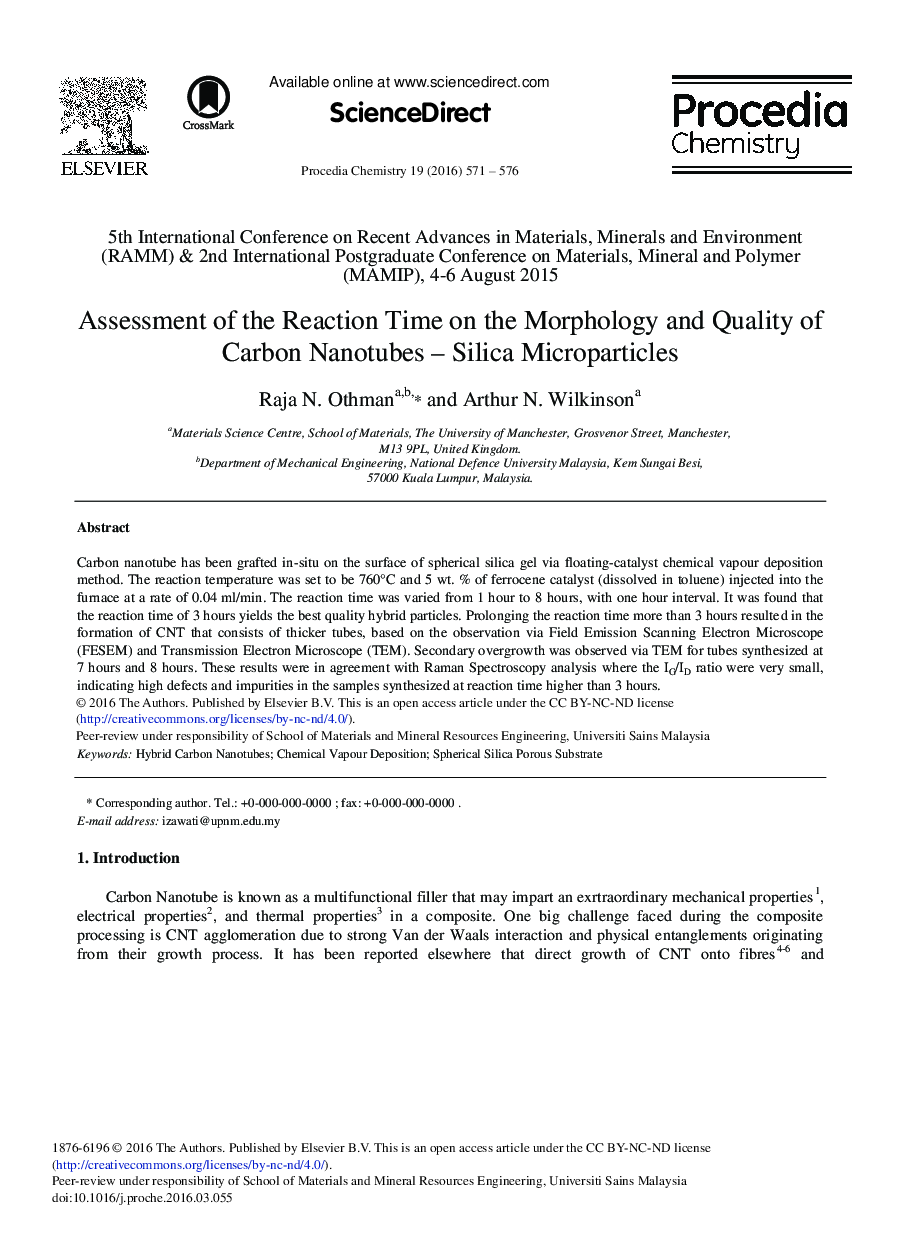| Article ID | Journal | Published Year | Pages | File Type |
|---|---|---|---|---|
| 239868 | Procedia Chemistry | 2016 | 6 Pages |
Carbon nanotube has been grafted in-situ on the surface of spherical silica gel via floating-catalyst chemical vapour deposition method. The reaction temperature was set to be 760 °C and 5 wt. % of ferrocene catalyst (dissolved in toluene) injected into the furnace at a rate of 0.04 ml/min. The reaction time was varied from 1 hour to 8 hours, with one hour interval. It was found that the reaction time of 3 hours yields the best quality hybrid particles. Prolonging the reaction time more than 3 hours resulted in the formation of CNT that consists of thicker tubes, based on the observation via Field Emission Scanning Electron Microscope (FESEM) and Transmission Electron Microscope (TEM). Secondary overgrowth was observed via TEM for tubes synthesized at 7 hours and 8 hours. These results were in agreement with Raman Spectroscopy analysis where the IG/ID ratio were very small, indicating high defects and impurities in the samples synthesized at reaction time higher than 3 hours.
